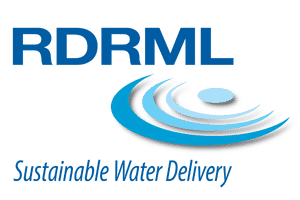Our Scheme
The Rangitata Diversion Race Scheme
As its name implies, the RDR diverts water from the Rangitata River into a large canal (or ‘Race’). The Race is a 67km long canal that starts at the Rangitata River, below the gorge at Klondyke, and journeys northward across the top of the Canterbury Plains to its discharge point on the Rakaia River at Highbank. All along the Race there are offtakes of varying sizes where water can be diverted for stockwater, irrigation and MAR when required with hydrogeneration along the way and at the end of the scheme.
There is a secondary intake on the scheme that can divert additional water into the RDR off the Hakatere/South Ashburton River.
The RDR is a gravity scheme which means the water flows the entire 67km length under its own steam! To achieve this the Race is very gently sloped and this is the reason that it follows quite a wiggly path across the plains – it is essentially following the contour of the land to minimise the amount of construction and impact on the local landscape.
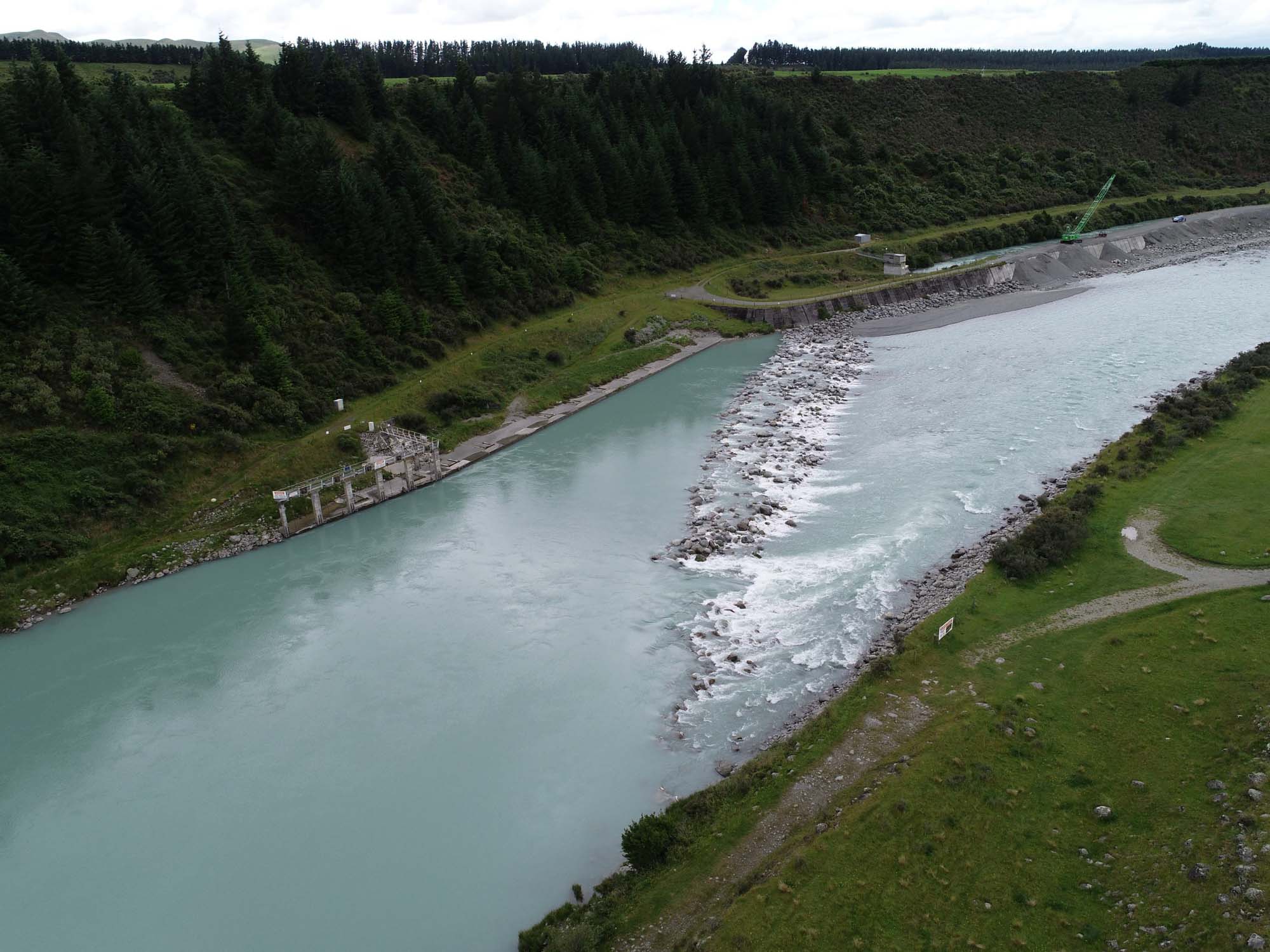
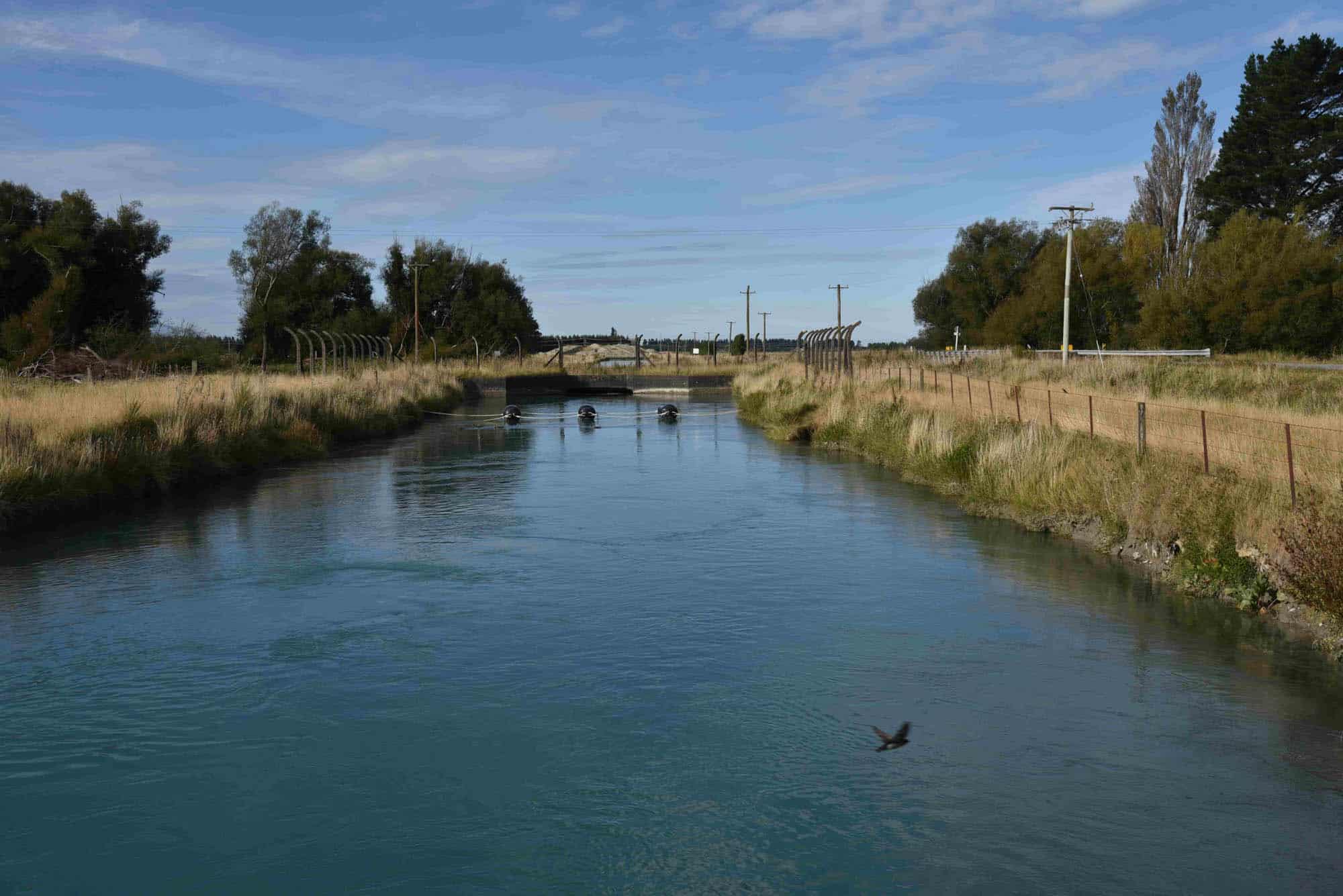
Along its journey, the Race crosses eight streams and rivers which flow from the foothills down the plains and at each crossing the Race is taken under the river or stream in an inverted syphon – each an amazing piece of engineering and construction. The Race also has a number of control and safety structures and facilities to manage the flows in the scheme.
There are two power stations on the RDR. Highbank Power Station was part of the original design and construction and is located at the end of the Race on the Rakaia River. Highbank PS operates full time in the winter season and in the summer (irrigation) season generates with any water not required for irrigation. Montalto Power Station was built in 1982 and is located near the top of the RDR at Montalto. It operates all year round, whenever there is water flowing in the RDR.
In 2010 a SCADA system (System Control and Data Acquistion system) was incorporated into the RDR operation which enables the whole scheme to be monitored from mobile phones and operated remotely from laptops by the small operations team. The amount of water coming into the RDR and delivered at the various offtakes can all be controlled via the SCADA System which also provides continuous information for the operators on canal flows and water levels. Status information and alarms are sent directly to operations staff via the SCADA system and to mobile phones.
The operation of the RDR has changed considerably as a result of the scheme enhancements driven primarily by the developments and technological improvements in the irrigation schemes. There are now eighteen offtakes for irrigation (originally four) which adds more complexity to the scheme operation but the biggest change has resulted from the addition of Barrhill Chertsey Irrigation Ltd’s (BCIL) operation to the RDR. BCIL’s main consent is for water from the Rakaia River and this is delivered to the RDR via Manawa Energy’s pumping facility at Highbank.
Since the RDR was constructed over 80 years ago there have been a number of enhancements but, essentially, the scheme is still doing what it was originally designed to do – delivering water for irrigation, hydro-generation and stockwater. Its resilience and ongoing value and benefit to the region, is a credit to the pioneering thinkers, politicians and engineers that enabled it to be constructed.
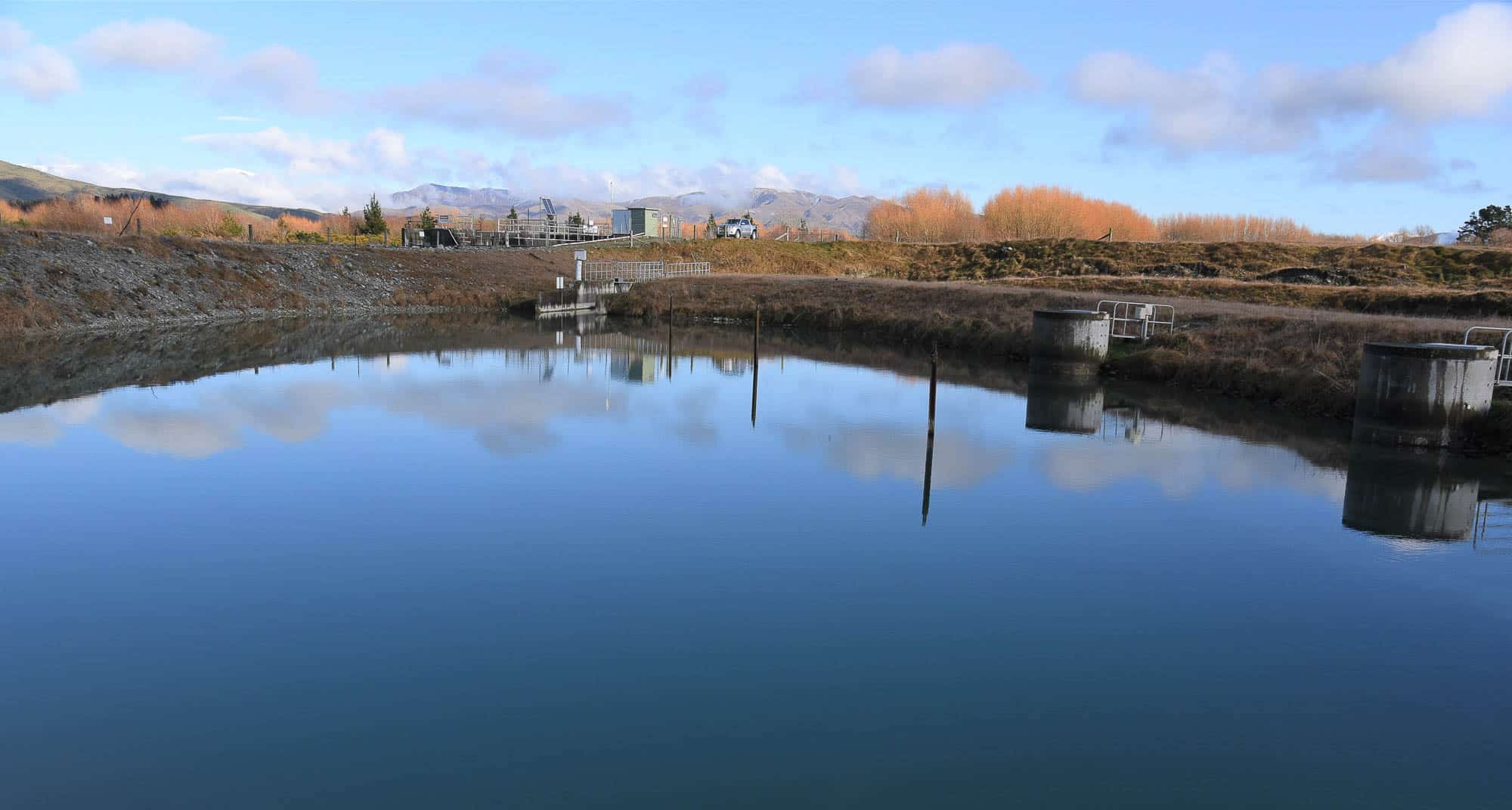
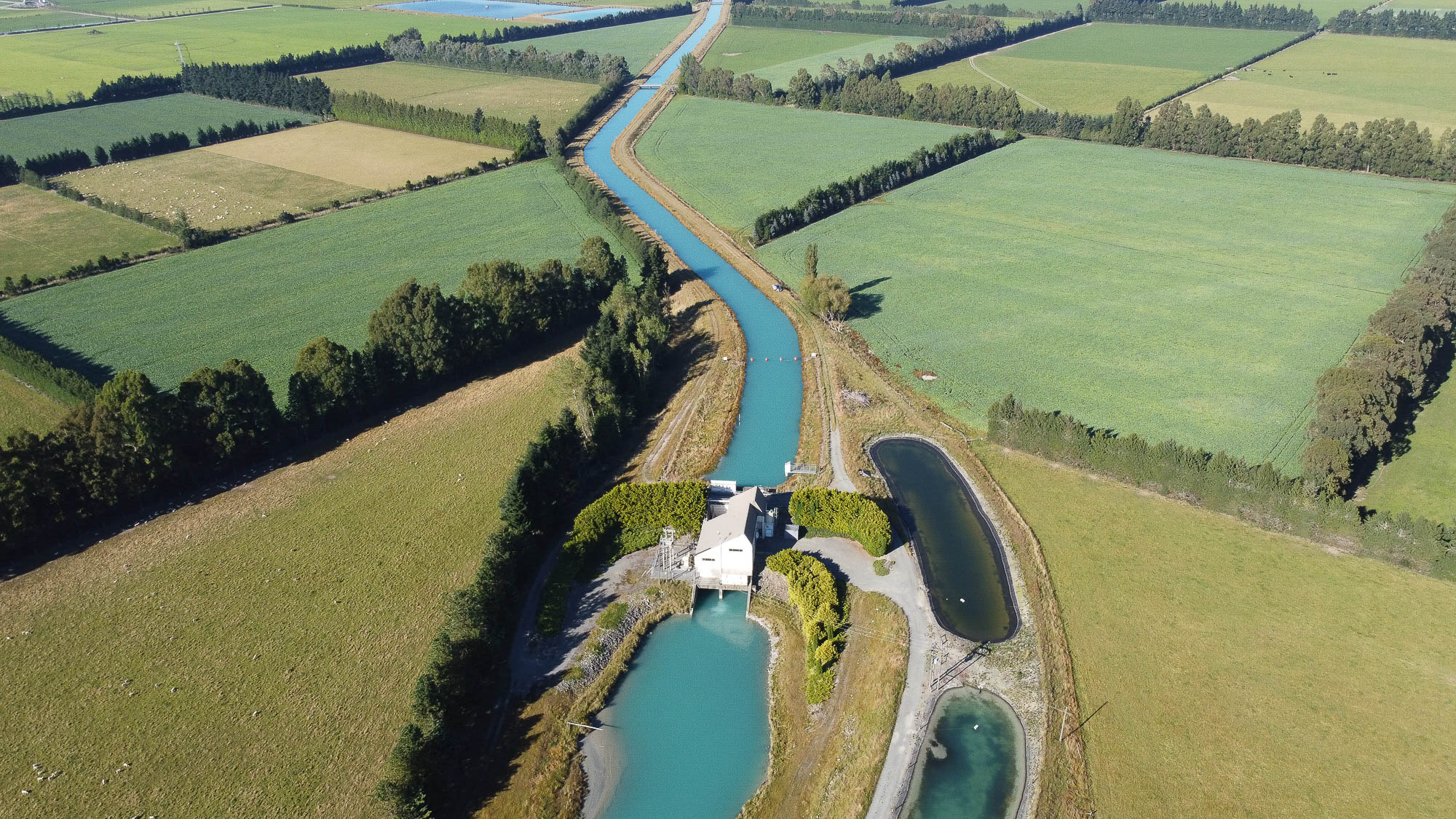
Delivering Water
In the generation season, the operation of the scheme is simplified with all available water (after stockwater requirements are met) used for hydrogeneration. The RDR is a multi-use scheme that operates all year round, normally conveying between 28 and 36 cumecs depending on river levels, water demand and time of the year. At low river levels the RDR flow is reduced to ensure prescribed minimum flows remain in the rivers.
In the irrigation season (September to May), daily water orders from each of the irrigation schemes are collated and the RDRML Operators plan the distribution of the available water. Any available water surplus to stockwater and irrigation requirements is used for hydro-generation at Montalto and Highbank Power Stations.
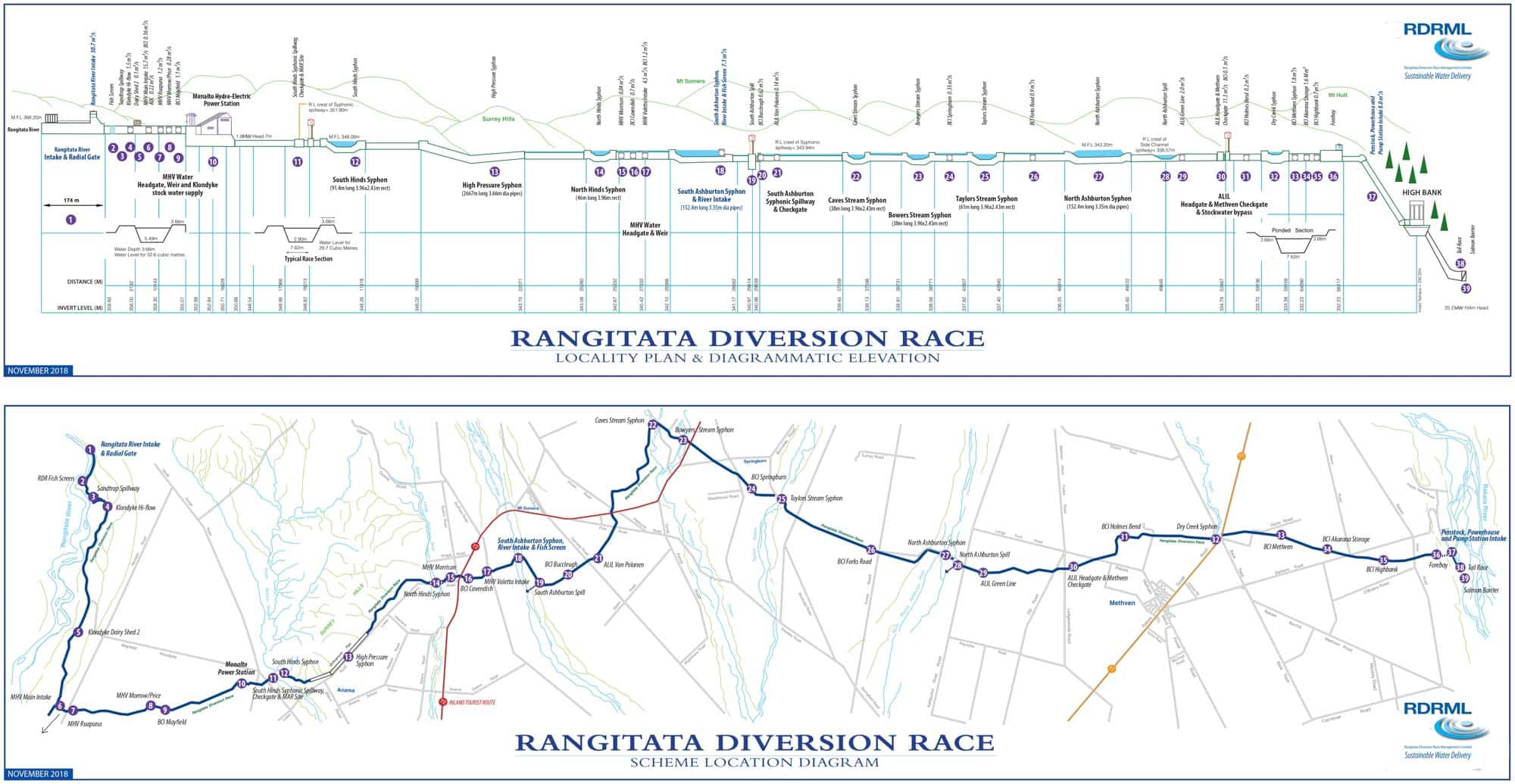
Consents & Compliance
RDRML has over 40 resource consents but the two main consents relate to the diversion of water from the Rangitata and Hakatere/South Ashburton rivers.
Rangitata River
Resource consent CRC182542 provides for the diversion of up to 30.7 cumecs from the Rangitata River at the RDR Intake located at Klondyke.
When the river flow drops below 60 cumecs (measured by ECan in the gorge section 1.5km above the RDR Intake) the maximum diversion permitted reduces to 26.2 cumecs. There are a series of reduction steps as the river flow drops further which are formulated to ensure a minimum residual flow in the river of at least 20 cumecs in summer and 15 cumecs in winter.
This resource consent also contains conditions relating to the performance of the fish screen located 1200m downstream from the intake.
Separate consents are held for the diversion and subsequent discharge of up to 5 cumecs for the operation of the fish bypass associated with the fish screen.
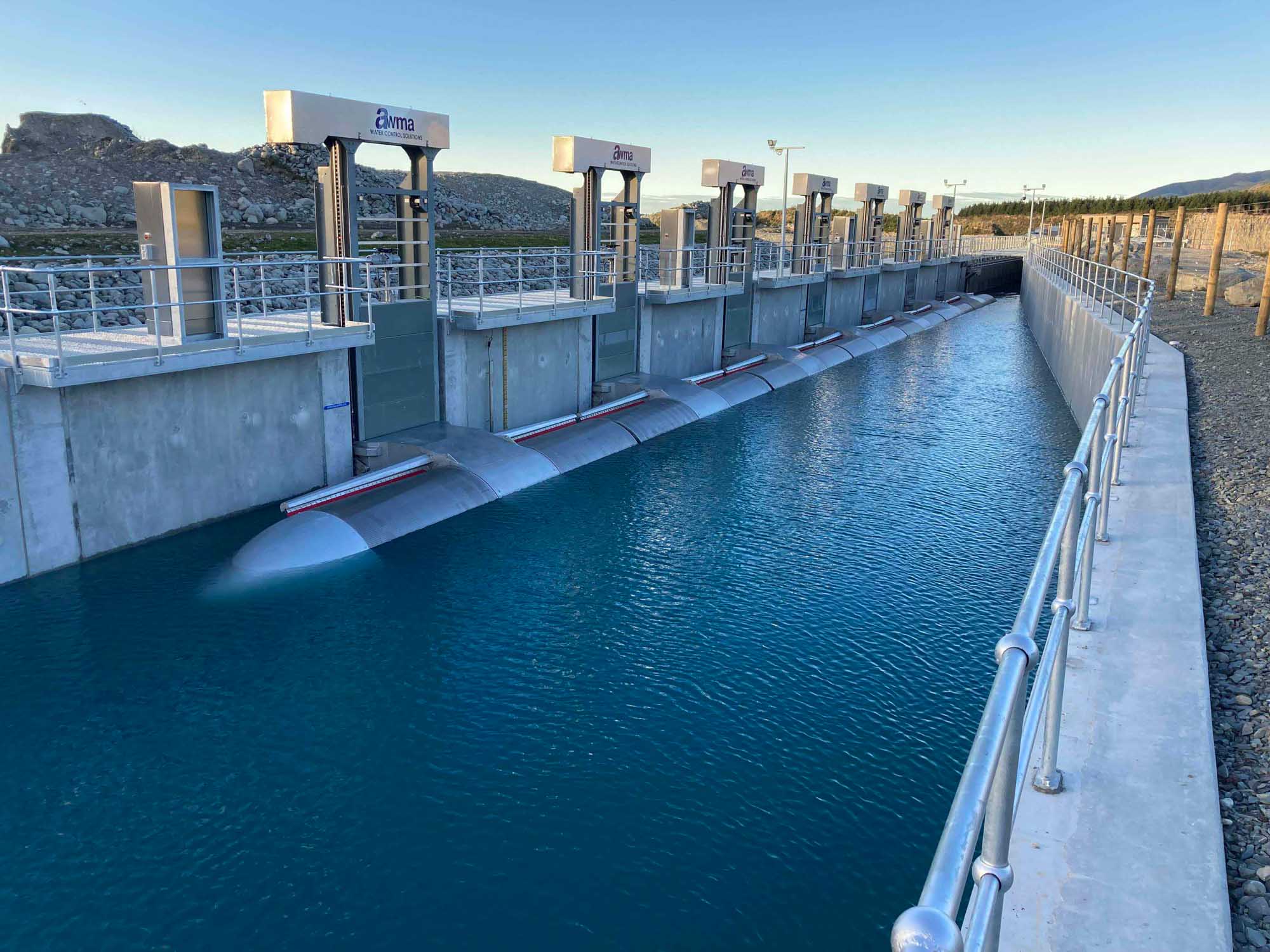
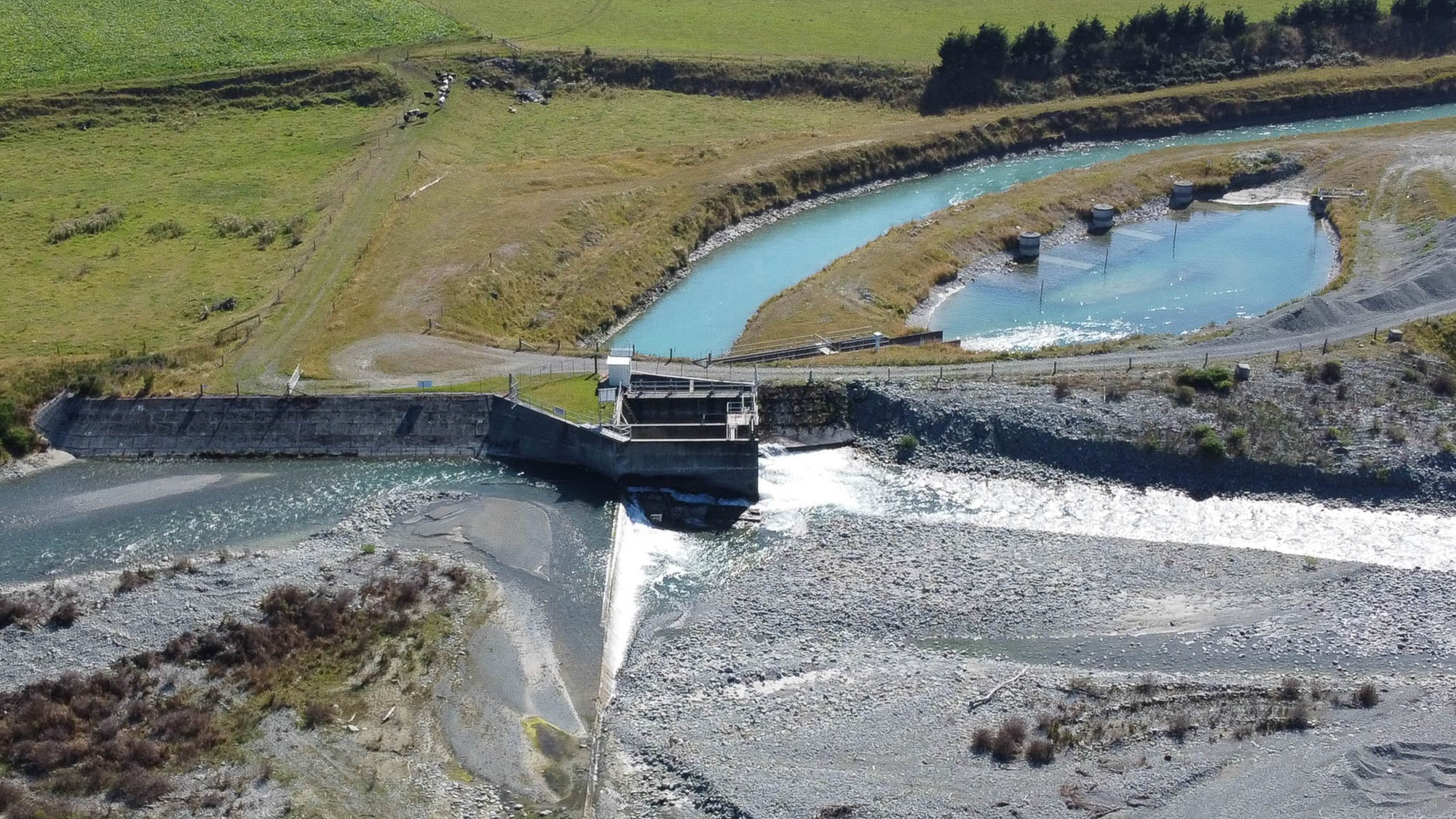
Hakatere / South Ashburton River
Resource consent CRC234706 provides for the diversion of up to 7.1 cumecs from the Hakatere/South Ashburton at the auxiliary RDR Intake located off Tramway Rd.
The combined diversion of the two main RDR consents (Rangitata River plus Hakatere) is limited to 35.4 cumecs.
The diversion into the RDR is dependent on the flow in the river and is limited to 5.1 cumecs if the flow below the auxilary intake drops below 4 cumecs, and no diversion is permitted if the flow below the auxiliary intake falls below 3.2 cumecs (Feb-Apr) or 2.3 cumecs (May to Jan).
Other RDRML Consents
RDRML holds a number of additional consents that relate to the various activities that the company undertakes, mainly in and around rivers, as part of its operation and maintenance work.
